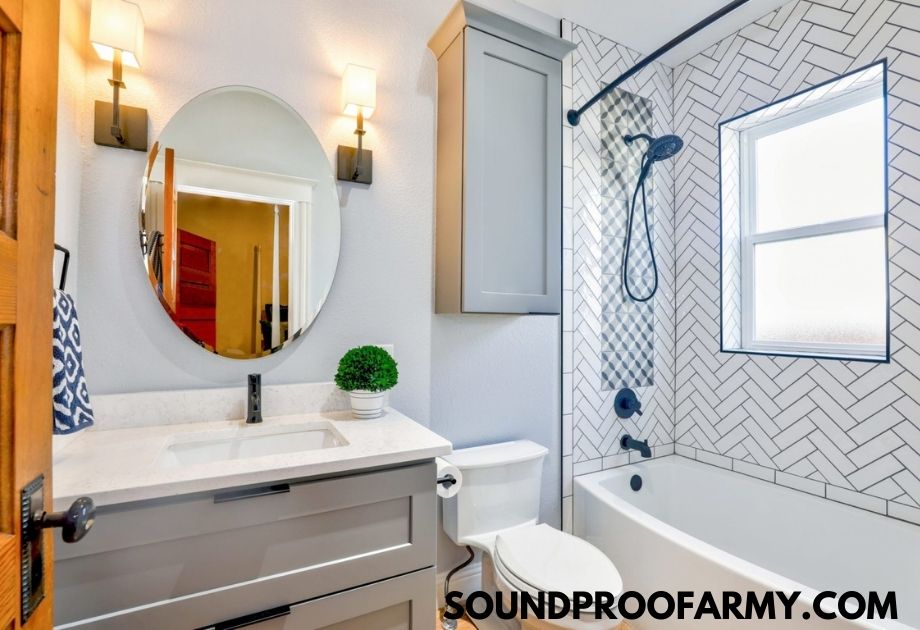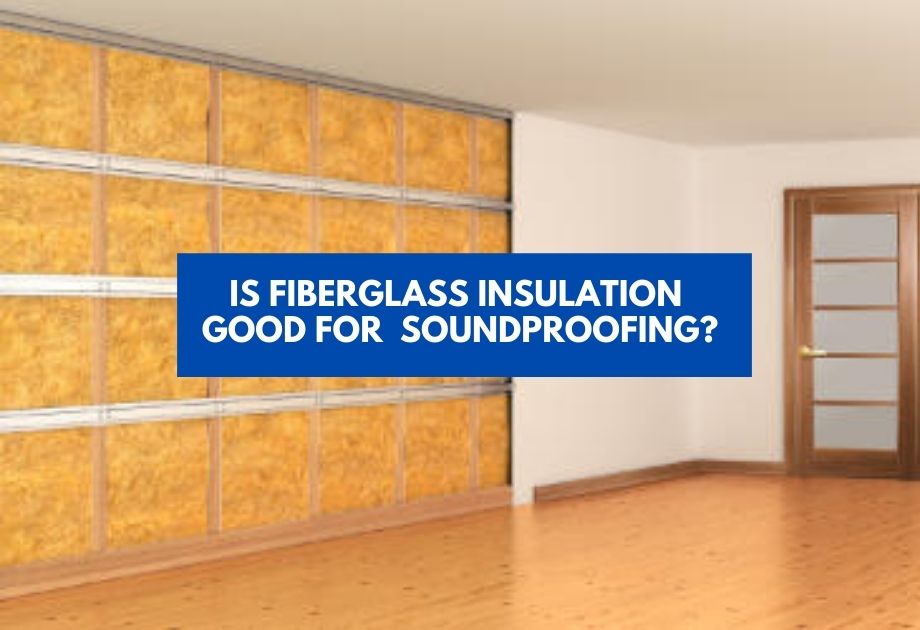Acoustic Sealant is used to reduce noise transmission around electrical boxes or at the perimeter of wall systems. Regular silicone doesn’t retain flexibility while acoustic sealant does and adheres firmly to all building materials, unlike regular silicone.
It’s non-flammable, the latex-based paintable elastic sealant that remains permanently flexible for up to 5 times that of competitor brands and meets ASTM E-84 standards for fire retardancy.
Acoustical caulking plays a vital role in reducing noises that flank through structures.
It retains flexibility and doesn’t dry hence aiding both soundproofing efficiency and higher STC ratings for walls.
In this guide, we’ll be examining several acoustic sealant and its alternatives available in the market today and their complementary products.
Table of Contents
What Is Acoustic Sealant
Acoustic Sealant is a flexible, durable sealant that has been specially designed for use in acoustic renovation and construction projects.
It is used to seal joints and cracks where sound, air, and water leaks can occur.
In particular, it’s often applied in the area around electrical boxes or at the perimeter of wall systems.
Acoustic sealant is an effective noise barrier to stop sound transmission.
Acoustical Sealants are not designed for sealing against chemical leaks or flammable gas, but they can be combined with a fire-rated sealant in those cases.
This material comes in various colors from clear to black and different thicknesses depending on the project requirements.
It should only be applied on external surfaces of structures where air leakage cannot cause any damage like electrical boxes, joints around windows or doors, etc.
Acoustic Sealant creates a weatherproof watertight acoustic buffer that blocks out unwanted sounds such as traffic noise or outside noise which makes it perfect for use near bedrooms and living rooms.
The product is not only used to dampen vibration and seal holes but it’s also a great alternative to other types of noise-proofing materials such as sound-dampening curtains, foam panels, or drywall.
What Makes a Sealant an Acoustic Sealant?
There are a few characteristics that make a sealant an acoustic sealant. The first is the thickness.
The second is the color. And finally, you need to make sure it’s flexible.
Regular sealants will dry and crack, but acoustical bonds will stay flexible. This means that the acoustical bonds won’t change while they are drying.
Compared to other types of soundproofing materials, a good sealant can block both airflow and sound waves.
As the acoustic caulks have the power to convert sound waves into minimal amounts of heat.
A-List of the Best Acoustic Sealants on the Market Today
Now that you’ve read what soundproofing sealants are and how they work, let’s take a look at some of the most popular ones.
Some of these products adhere to construction materials and automotive sound-deadening materials.
Green Glue Acoustic Sealant
The Green Glue Acoustic Sealant is a Japanese product that creates an effective noise block with the help of adhesives.
This sealant also has the ability to be applied in thin layers, which can make it more affordable and easier to use than other acoustic sealants on this list.
Its versatility makes it great for both interior or exterior applications such as windowsills, walls, floors, floorboards, and ceilings.
The flexibility allows you to stretch into different shapes without cracking like some products might do which means no need for messy glues or wetting agents when applying this one type of acoustic sealant.
Green glue soundproofing material is not only reliable but long-lasting too!
It’s recommended by professionals because they know that it will work well.
It is also resistant to water, sunlight, and other types of weathering which means you won’t have to worry about your soundproofing material fading or deteriorating over time.
Green Glue Acoustic Sealant can be purchased in both a liquid form or as an aerosol spray for more complicated applications.
Feature highlights:
- Number of tubes -6
- Quantity in each tube -29 oz
- Caulk Color – White
Quiet zone Acoustic Sealant
The Quiet Zone is designed to absorb sound vibrations within the walls cavity.
Manufactured by Owens Corning, this product provides a means to block sound transmission between rooms.
The sealant also reduces the interior noise from windows and exterior doors.
Quiet Zone sealant is great for doors outside. But you should be careful with it. It can make your eyes and skin feel weird.
You should not breathe in vapors and use it with adequate ventilation.
Quiet Zone Acoustic sealant has been tested by an independent laboratory to ensure that it meets all the necessary requirements for Acoustic Sealant Standards.
Liquid Nails Acoustical Sound Sealant
Liquid Nails Acoustical Sound Sealant is a liquid, non-hardening product.
The Liquid Nails Acoustical Sound Sealant is intended to be used to seal gaps and holes in walls that make excessive noise.
It was formerly referred to as acoustical sealant, but the name was changed to the Liquid Nails Acoustical Sound Sealant.
It is an acoustic sealant that reduces sound emission for outdoor living spaces, decks, pool areas, porches, and many other surfaces.
This product has passed ASTM E 90 for its impressive acoustics.
It was also tested in accordance with ASTM E 84 for smoke generation and flame spread.
Liquid Nails Acoustical Sound Sealant contains no solvents, so it is safe around children and animals. It is also water-resistant.
OSI SC175 Draft and Acoustical Sound Sealant
OSI SC175 Draft and Acoustical Sound Sealant is a sealant that can be applied to surfaces of windows, walls, or anywhere else where there may be air leaks.
It also has applications for noise control in theaters, schools, hospitals, and other public institutions.
Moreover, it can be used around the perimeter of panels and walls in order to block noises coming from air vents or electrical/lighting cutouts.
Not only does it dampen sounds passing through these areas, but it also seals drafty cracks.
OSI Acoustical Sound Sealant can be used on all materials.
It is also paintable and in a few minutes will dry with no odor or mess, making it an ideal solution for both interior and exterior walls.
It is a natural latex-based sealant that improves the STC rating of building systems.
Feature highlights:
- Number of tubes -12
- Quantity in each tube -28 oz
- Caulk Color – White
Auralex Acoustics STOPGAP Acoustical Sealant
Auralex Acoustics, Inc. is a company that produces innovative sound control products and 3D audio systems for recording studios, theaters, and home entertainment centers.
They are the industry leader for innovative acoustic solutions, such as acoustical sealants.
Auralex STOPGAP Acoustical Sealant is a 2 part acoustical sealant product that can be used to fill in gaps up to 4″ wide in the walls of an enclosure.
The components are mixed at a ratio of 1:1 by volume before being applied to the substrate using a trowel or caulking gun.
Once applied, the mixture begins to firm up and set into place without any need for curing time after application.
The product has a density of 12.0 lb/cu ft, which is a suitable level for sound control products.
The StopGap sealant is a water-based elastic sealant that can be used for reducing noise transmission in electrical box cutouts or at the perimeter of wall systems to achieve improved STC/MTC values.
This product is perfect for your house because it doesn’t leave any stains and meets all ASTM E-84 standards for fire retardancy.
The product comes in a container that can be bought online.
It’s important to note that Auralex Acoustic Sealant can be used in both new construction and remodeling projects.
Because it creates an airtight bond between substrates with no noticeable odor when applied correctly (according to instructions).
Feature highlights:
- Number of tubes -1
- Quantity in each tube -29 oz
- Caulk Color – White
Franklin International 2892 Sound Sealant
This product is designed for the sealing of ducts for noise and airtightness.
This sealant has been tested to be watertight, vapor-tight, water-resistant, odorless, non-corrosive, and non-flammable.
The formulation of this sealant prevents the intrusion of moisture and other contaminants into space between two adjacent surfaces.
The formulation also contains silicone that acts as a low viscosity lubricant on all metal surfaces.
The sealant runs in 29 oz tubes and can be cleaned up with water before it hardens. Franklin 2892 remains flexible yet improves soundproof.
Feature highlights:
- Number of tubes -1
- Quantity in each tube -29 oz
- Caulk Color – Green
TMS Acoustical Caulk
TMS Acoustical Caulk is a flexible and resilient acrylic cast timeline for sealing around any type of joint in metal acoustic enclosures.
The TMS Acoustical Caulk can also be used for caulking the perimeter of the enclosure or at the joint between panels.
TMS Acoustical Caulk can be easily removed from most surfaces by applying a solvent or power wash.
This product provides an air-tight seal that reduces vibration and sound transmission within the enclosure.
This product is resistant to ultraviolet light, weathering, water, dust, and chemicals and will not discolor over time.
It does not swell when exposed to high temperatures or shrinks when subjected to low-temperature extremes.
TMS Acoustical caulk can improve the STC rating. The acoustical caulk needs to be applied in 3-7 days depending on the temperature and humidity.
TMS caulk is available in 28 oz plastic single tubes which are sold individually or in quantities of 1, 6, and 12.
The clean excess product when still wet with a paper towel or cloth and mineral spirits or acetone.
Tremco Acoustical Sealant
Tremco brand acoustical sealant is designed for use in sealing gaps and openings to reduce sound transmission through ceilings, walls, floors, and other construction elements.
It is made from a water-based formulation that is low odor and non-flammable.
These sealants offer noise reduction performance ratings up to R-6.
The sealant is intended for use in wall joints and seams to reduce noise transmission.
It can be used on everything from drywall partitions to corridors, which produces a sound-dampening effect up to an STC of 60.
The sound sealant comes in a tube that is 24.7 ounces.
You will need to clean the excess off with paper towels and mineral spirits or xylene.
The work site must be well ventilated and you should wear protective gloves too.
Acoustic Sealant Application: What’s Required?
Acoustic sealants are designed for sealing cracks in ducts and other areas where there is an increased risk for leaks.
The material can also be used to wrap and seal an area or object, which is something that happens often with wiring running through walls and ceilings or in roofing applications.
For this reason, one of the most important factors when choosing acoustic sealants is compatibility with your specific application.
Acoustic sealant is a sound-deadening material and its application is determined by the size of your soundproofing project.
In conjunction with other sound-dampening materials, it can be used to achieve higher STC ratings for walls.
Before applying acoustic sealant, it is important to ensure the surface is clean and debris-free.
If there are any small holes or openings in ceilings, use a knife or scissors to remove dust and dirt particles.
The hole should be no smaller than ¼” in diameter for best results.
Apply sealant to the crack or hole, and let cure for 30 mins before wiping clean.
When installing on larger openings such as under large windows, electrical boxes, and doors replace the first layer with a backer rod (provided by the manufacturer).
Then apply a 2nd layer of sealant letting it fully dry before beginning the soundproofing process.
Acoustical Sealant Vs. Silicone
The first functional difference between these two types of materials would be their lifespan.
Acoustical seals will perform for many years until they wear out whereas silicone-based products may need to be replaced every few months because they dry up over time with exposure to air and water.
Another difference would be the type of seal that they provide.
Acoustical seals create a tight, airtight seal whereas silicone only creates incidental contact with surfaces.
Acoustic Sealants are made from more durable material and typically cost less than silicone products, making them much easier on your wallet in the long run.
Another main difference between Acoustical Seals and Silicone is the noise that they are able to block.
Acoustic sealants can be used for a variety of different purposes, including blocking sound from interfering with your work or sleep.
Acoustical Seals also come in larger sizes (up to 48″ x 200″), which means you’ll need fewer materials to cover larger areas like windows or walls.
The last difference between Acoustic Sealant and Silicone would be flexibility.
Acoustical Seals are typically not as flexible and should only come into contact with surfaces that are flat, sealed, clean, free of grease, oil, and dirt.
Acoustic Sealant is the better option for you if you need to stop sound from coming in through cracks in your walls because it’s more expensive but lasts longer than Silicone.
Final thoughts on Acoustic Sealant Acoustical
I think that acoustic sealant is a good idea to add to your home because it will make your home quieter.
It’s not that expensive and it’s worth the investment.
Acoustic sealant has helped me when I have problems with my neighbors because they don’t bother me anymore because their voices are dampened by the acoustic sealant in my walls.
Acoustic sealants are versatile materials that both block noise and fill gaps.
Various noise-blocking materials exist on the market, but my top pick is the green glue acoustic sealant.
This sealant meets all the criteria that you would want in a sealant. It can control noise no matter where it comes from.






![How To Soundproof A Basement Ceiling Cheaply [9 Ways]](https://soundproofarmy.com/wp-content/uploads/2021/06/cheapest-ways-to-soundproof-basement-ceiling-Simple-DIY-Hacks.jpg)

![How to Soundproof a Door with Household Items [14 Effective Ways]](https://soundproofarmy.com/wp-content/uploads/2021/07/How-to-Soundproof-a-Door-with-Household-Items.jpg)







